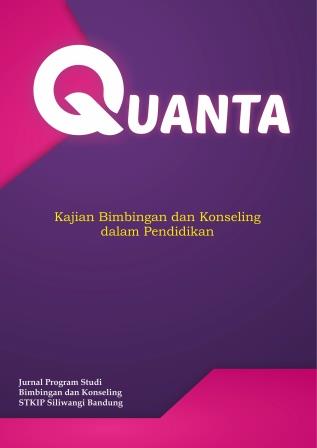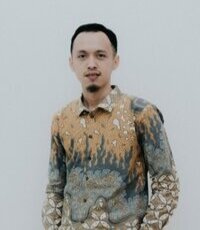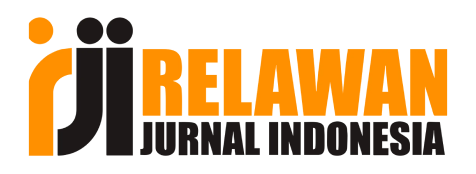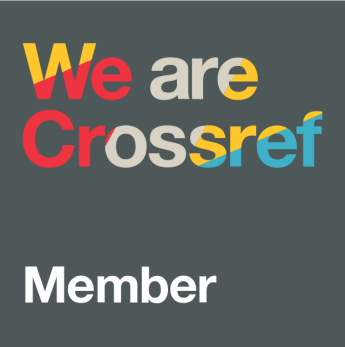The Relationship between Self-Concept and Self-Confidence of Junior High School Students
DOI:
https://doi.org/10.22460/quanta.v9i1.5474Keywords:
Self-Concept, Self-Confidence, Junior High School StudentsAbstract
Some students have low self-confidence and have a negative self-concept. The study aimed to determine the relationship between self-concept and self-confidence of second-grade students at SMP Negeri 1 Salem. This research was conducted in 2024. This study uses a correlational method with a descriptive correlational design. The results showed a relationship between self-concept and students' self-confidence. The degree of relationship between the self-concept variable and the self-confidence variable is correlated with a strong category in a positive form. This study's conclusion reveals a positive and significant relationship between self-concept and self-confidence of second-grade students at SMP Negeri 1 Salem. The higher the self-concept variable, the higher the self-confidence variable. The study strengthens the theory, stating that self-concept plays an important role in shaping students' self-confidence. The results can be a reference in developing theories related to adolescent developmental psychology.
References
Amri, S. (2018). Pengaruh kepercayaan diri (self confidence) berbasis ekstrakurikuler pramuka terhadap prestasi belajar matematika siswa SMA Negeri 6 Kota Bengkulu. Jurnal Pendidikan Matematika Raflesia, 3(2), 156-170. https://doi.org/10.33369/jpmr.v3i2.7520
Andiwijaya, D., & Liauw, F. (2019). Pusat pengembangan kepercayaan diri. Jurnal Sains, Teknologi, Urban, Perancangan, Arsitektur (Stupa), 1(2), 1695-1704. https://journal.untar.ac.id/index.php/jstupa/article/view/4487/4631
Ariyani, S. M., Handayani, A., & Setiawan, A. (2023). Hubungan Konsep Diri terhadap Kepercayaan Diri Siswa Kelas XII SMA Teuku Umar Semarang. WASPADA (Jurnal Wawasan Pengembangan Pendidikan), 11(2), 42-49. https://ejournal.undaris.ac.id/index.php/waspada/article/viewFile/470/358
Belfi, B., Goos, M., De Fraine, B., & Van Damme, J. (2012). The effect of class composition by gender and ability on secondary school students’ school well-being and academic self-concept: A literature review. Educational research review, 7(1), 62-74. https://doi.org/10.1016/j.edurev.2011.09.002
Carver, C. S., & Scheier, M. F. (2014). Dispositional optimism. Trends in cognitive sciences, 18(6), 293-299. https://doi.org/10.1016/j.tics.2014.02.003
Chaouali, W., Souiden, N., & Ladhari, R. (2017). Explaining adoption of mobile banking with the theory of trying, general self-confidence, and cynicism. Journal of Retailing and Consumer Services, 35, 57-67. https://doi.org/10.1016/j.jretconser.2016.11.009
Deni, A. U. (2016). Konsep Kepercayaan Diri Remaja Putri. Educatio. Jurnal Pendidikan Indonesia, 2(2), 43-52. http://dx.doi.org/10.29210/12016272
Ginevra, M. C., Pallini, S., Vecchio, G. M., Nota, L., & Soresi, S. (2016). Future orientation and attitudes mediate career adaptability and decidedness. Journal of Vocational Behavior, 95, 102-110. https://doi.org/10.1016/j.jvb.2016.08.003
Heiphetz, L., & Young, L. L. (2017). Can only one person be right? The development of objectivism and social preferences regarding widely shared and controversial moral beliefs. Cognition, 167, 78-90. https://doi.org/10.1016/j.cognition.2016.05.014
Ismail, V. Y. (2014). The comparison of entrepreneurial competency in woman micro-, small-, and medium-scale entrepreneurs. Procedia-Social and Behavioral Sciences, 115, 175-187. https://doi.org/10.1016/j.sbspro.2014.02.426
Kusuma, A. R., & Afdliah, R. (2012). Hubungan antara kepercayaan diri dan konformitas dengan perilaku konsumtif pada mahasiswa. Psikostudia: Jurnal Psikologi, 1(1), 17-30. http://dx.doi.org/10.30872/psikostudia.v1i1.2123
Neubauer, A. C., Pribil, A., Wallner, A., & Hofer, G. (2018). The self–other knowledge asymmetry in cognitive intelligence, emotional intelligence, and creativity. Heliyon, 4(12). https://doi.org/10.1016/j.heliyon.2018.e01061
Palenzuela-Luis, N., Duarte-Clíments, G., Gómez-Salgado, J., Rodríguez-Gómez, J. Á., & Sánchez-Gómez, M. B. (2022). Questionnaires assessing adolescents’ Self-Concept, Self-Perception, physical activity and lifestyle: a systematic review. Children, 9(1), 91. https://doi.org/10.3390/children9010091
Perinelli, E., Pisanu, F., Checchi, D., Scalas, L. F., & Fraccaroli, F. (2022). Academic self-concept change in junior high school students and relationships with academic achievement. Contemporary Educational Psychology, 69, 102071. https://doi.org/10.1016/j.cedpsych.2022.102071
Raikes, J., & McBean, G. (2016). Responsibility and liability in emergency management to natural disasters: A Canadian example. International Journal of Disaster Risk Reduction, 16, 12-18. https://doi.org/10.1016/j.ijdrr.2016.01.004
Resa, F. O., & Soetjiningsih, C. H. (2022). Hubungan antara Konsep diri dengan Kepercayaan diri pada Korban Body Shaming. Bulletin of Counseling and Psychotherapy, 4(3), 725-731. https://doi.org/10.51214/bocp.v4i3.407
Savira, S. I. (2021). Hubungan antara konsep diri dan kepercayaan diri dengan intensitas penggunaan media sosial sebagai moderator pada Mahasiswa Psikologi Universitas Negeri Surabaya. Ejournal Unesa, 8(2). https://doi.org/10.26740/cjpp.v8i3.41122
Syam, A., & Amri, A. (2017). Pengaruh kepercayaan diri (self confidence) berbasis kaderisasi IMM terhadap prestasi belajar mahasiswa (studi kasus di program studi pendidikan biologi fakultas keguruan dan ilmu pendidikan universitas muhammadiyah parepare). Jurnal biotek, 5(1), 87-102. https://doi.org/10.24252/jb.v5i1.3448
Utomo, P., & Maratus, S. (2021). The effectiveness of using educational cinema techniques to increase students’ self-confidence: An experimental research. ProGCouns: Journal of Professionals in Guidance and Counseling, 2(2), 51-61. http://dx.doi.org/10.21831/progcouns.v2i2.41101
Vandini, I. (2016). Peran kepercayaan diri terhadap prestasi belajar matematika siswa. Formatif: Jurnal Ilmiah Pendidikan MIPA, 5(3). http://dx.doi.org/10.30998/formatif.v5i3.646
Downloads
Published
How to Cite
Issue
Section
License
Copyright (c) 2025 Celine Astutiningtyas Tyas, Agus Setiawan, Chr. Argo Widiharto

This work is licensed under a Creative Commons Attribution-ShareAlike 4.0 International License.
The author is responsible for acquiring the permission(s) to reproduce any copyrighted figures, tables, data, or text that are being used in the submitted paper. Authors should note that text quotations of more than 250 words from a published or copyrighted work will require a grant of permission from the original publisher to reprint. The written permission letter(s) must be submitted together with the manuscript.













